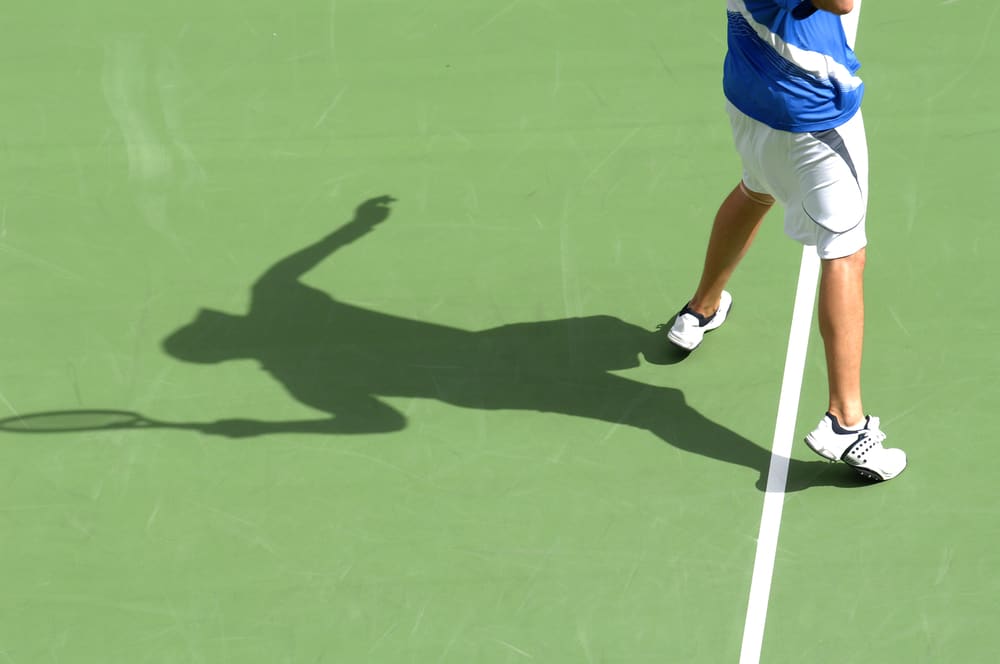If you’ve played tennis, you know it requires a combination of skill, agility, and strategy. Matches are fast-paced and require players to be on top of the rules and regulations to perform at their best.
The serve is one of the most important aspects of tennis, as it starts at each point. It’s critical to the outcome of the match, and a foot fault can significantly impact the entire game. Understanding the concept of a foot fault in tennis is essential for players, fans, and officials alike.
POINTS
- A foot fault in tennis occurs when the server steps on or beyond the baseline while serving.
- The serve line and service box are two key locations that determine if a foot fault has occurred.
- Foot faults are typically called by line judges, with final decisions being made by chair umpires.
- If a foot fault is called, the player will lose the point and may face further penalties such as losing games or being disqualified from matches.
- Common causes of foot faults include serving too far behind the baseline and not paying close enough attention to service lines.
Definition of a foot fault
In a tennis match, a foot fault is a type of fault that occurs when the server steps on or beyond the baseline while serving the ball. The serve line and the service box are the two key locations that determine if a foot fault has occurred. The serve line is the line on the back of the court that marks the beginning of the service area, while the service box is the area in which the server must stand when hitting the serve.
According to the rules of tennis, the server must keep both feet inside the service box while making the serve. If either footstep is on or over the baseline, it’s considered a foot fault, and the point will be awarded to the opponent.
The service box is 21 inches wide and extends from the center mark to the sideline. The center mark is located directly in the middle of the service box, and the service box extends to the sideline, creating a rectangular area.
How foot faults are called
Foot faults are typically called by line judges, who are responsible for making decisions on close calls. If a line judge calls a foot fault, the chair umpire has the final say on whether it was committed. The chair umpire can also call a foot fault if they observe it.
In a tennis match, the consequences of committing a foot fault can be significant. If a foot fault is called, the server will lose the point, and the opponent will be awarded instead. Similarly, if a player commits multiple foot faults during a match, they may face further penalties, such as losing the game or being disqualified from the match.
Players need to be aware of the rules surrounding foot faults, as they can easily be committed without the player realizing it. A foot fault occurs when the server’s feet touch the baseline or extend into the court before they hit the ball. This can happen if the player takes too long to serve or if they are not balanced before making the serve.
Line judges are typically positioned at the back of the court, where they have a clear view of the server’s feet. They are trained to make quick decisions on close calls and are expected to remain impartial and neutral throughout the match. If a line judge calls a foot fault, the chair umpire will typically ask the player to step back and make the serve again without penalty.
It’s worth noting that foot faults are often called in high-pressure situations, such as during important matches or tournaments. In these cases, the stakes are high, and players may feel added pressure to perform. This can make it even more critical for them to be aware of the rules surrounding foot faults and ensure they are serving the ball correctly.
Overall, foot faults are an important aspect of tennis and are called for to ensure that the rules of the game are followed. While they can be frustrating for players, they are necessary to maintain the integrity of the sport and ensure that matches are played fairly. By following the rules and being mindful of their footwork during serves, players can avoid committing foot faults and stay focused on their game.
Common causes of foot faults
There are several common causes of foot faults in tennis, including serving from too far behind the baseline and stepping on or over the service line. Players often make the mistake of starting their serve too far behind the baseline. When the server steps behind the baseline, they run the risk of committing a foot fault. This is more likely to happen when the player is nervous or rushing, which may cause them to take a large step backward before serving.
Another common cause of foot faults is not paying close enough attention to the service line. The service line is a critical aspect of the serve, and even a small mistake can result in a foot fault. Players who are unfocused or in a hurry run the risk of stepping on or over the service line, causing them to commit a foot fault.
To avoid foot faults, players need to practice proper footwork and focus on their technique during serves. Proper technique for serving includes paying attention to the position of your feet, the placement of the ball, and the timing of your serve. For instance, players can practice holding their serving arm and racket in the correct position and keeping their eyes on the ball while serving.
FAQ
What is the penalty for a foot fault in tennis?
A foot fault in tennis results in the loss of a point for the player who committed it. In some cases, repeated offenses may result in additional penalties, such as the loss of a game or match.
Who can call a foot fault in tennis?
In tennis, foot faults can be called by line judges and chair umpires. The line judges are positioned on the sides of the court and are responsible for calling foot faults and other line calls, while the chair umpire is the final decision-maker. They have the authority to overrule line judges or make decisions on calls that they do not make.
How do you stop foot faults in tennis?
To stop committing foot faults in tennis, players can focus on practicing proper footwork and maintaining proper technique during serves. Paying close attention to the placement of your feet and the distance between them while maintaining balance and stability while serving can also help avoid foot faults.
How often are foot faults called in tennis?
Foot faults are not often called in tennis, as they are considered a rare occurrence. However, they can still have a significant impact on the outcome of a match and should not be taken lightly.
Can you call a foot fault on your opponent in tennis?
Yes, in tennis, players can call foot faults on their opponents. If a player suspects their opponent of committing a foot fault, they can make a challenge to the chair umpire or line judge. The decision will be based on the rules and regulations of the match.
Conclusion
Foot faults are an important aspect of the rules of tennis and can have a significant impact on the outcome of a match. Understanding the definition of a foot fault, how they are called, and the common causes can help players avoid committing them unintentionally and improve their serving game. The tips and strategies we went over in this article can also be helpful in avoiding foot faults and improving overall technique.
With dedication and practice, you can master the intricacies of tennis, including foot faults, and become successful on the court. To continue improving your game, learn more about the rules and strategies of tennis and practice regularly to refine your technique and avoid penalties from foot faults.
 Written by Mark Sampson
Written by Mark Sampson